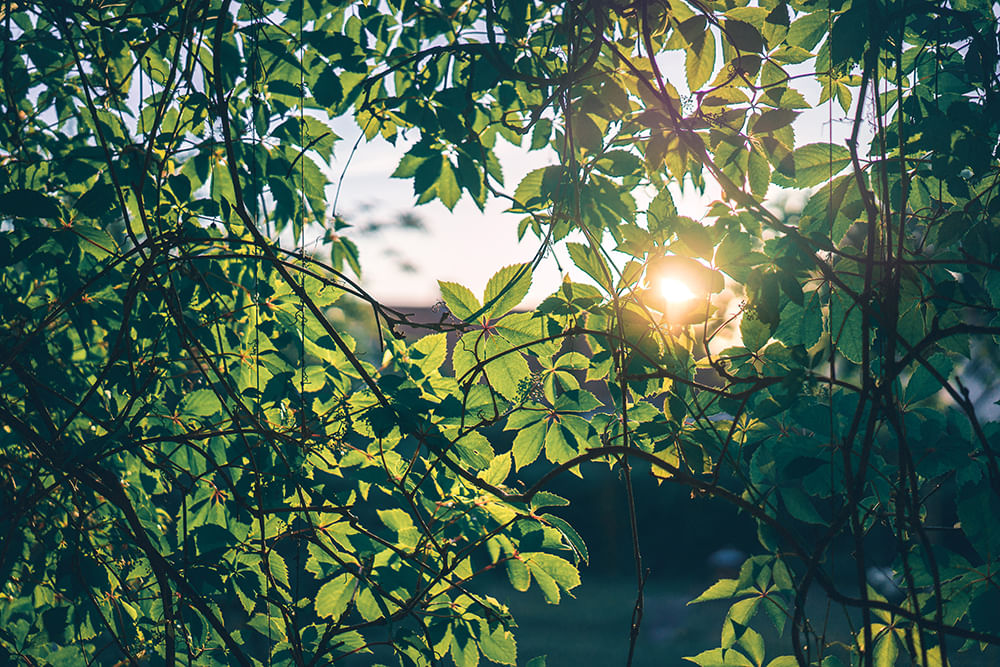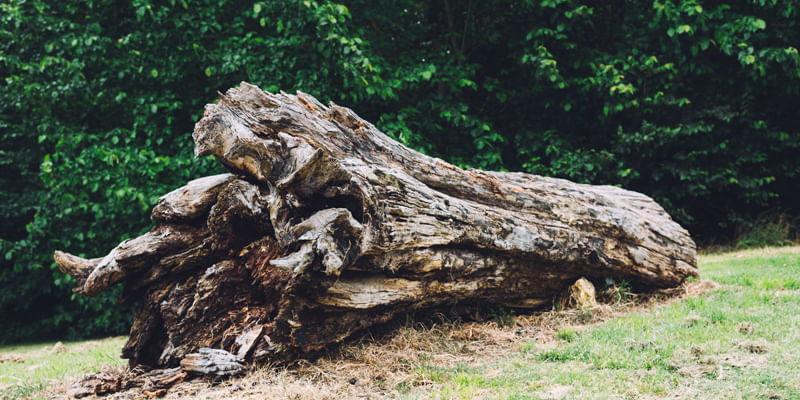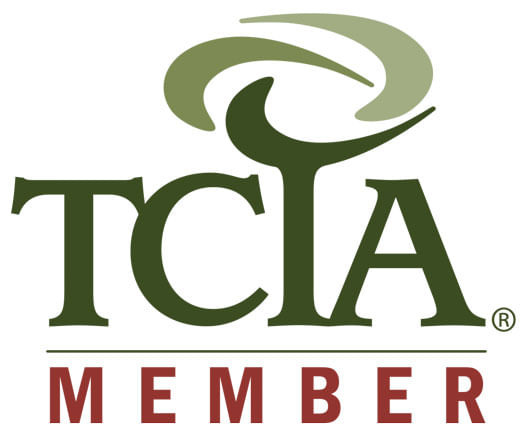Get storm-ready! Be hurricane-prepared BEFORE the season starts.

How to Identify Common Tree Diseases
Healthy trees provide shade, improve air quality, and increase property value. But just like any living organism, trees are vulnerable to disease. Tree diseases can quietly take root and spread, often going unnoticed until significant damage has occurred. That's why early identification is key. Knowing what to look for can save your trees, protect nearby vegetation, and help avoid costly removal or replacement. At Tree Titan, our team of certified arborists is here to help homeowners and property managers recognize the warning signs and take action before it’s too late.
Why Tree Diseases Matter
When a tree becomes infected, it can compromise the health of your entire yard or landscape. Tree diseases weaken the structure and vitality of trees, increasing the risk of falling limbs or full collapse, especially during storms or high winds. Beyond safety concerns, diseased trees can reduce curb appeal, spread illness to surrounding greenery, and attract pests. In urban and residential settings, tree diseases can have a ripple effect on local ecosystems and property aesthetics. By understanding why these issues matter, you’ll be more prepared to protect your investment and maintain a thriving outdoor space.
General Signs Your Tree Might Be Sick
Discolored or Spotted Leaves
Leaves with brown, yellow, or black spots often signal fungal or bacterial infections. Discoloration can start at the tips or edges and gradually spread across the leaf. If you notice entire sections of the tree turning color out of season, it may be time to investigate further.
Unusual Growths (Cankers, Galls, or Mushrooms)
Swellings, sunken areas, or fungal mushrooms on or near the base of the tree can indicate decay or internal rot. Cankers often look like open wounds or dead patches on the bark and are usually caused by fungal infections. These growths not only weaken the tree but also act as entry points for other pests and diseases.
Peeling Bark or Deep Cracks
Bark that is falling away or forming large cracks can mean the tree is struggling to transport nutrients. In some cases, this is a result of long-term disease, stress, or insect infestation. Healthy bark should remain firmly attached and show no signs of deterioration.
Wilting or Premature Leaf Drop
If your tree starts shedding leaves early in the season or displays constant wilting, it may be fighting an internal infection. Wilting can happen even if the tree is properly watered, indicating a root or vascular issue. Watch for uneven shedding or sparse canopies.
Dead Branches or Thinning Canopy
A thinning crown or brittle, leafless branches are usually signs of a deeper health issue. Dead branches can become hazardous, especially in high-traffic areas. The earlier these symptoms are noticed, the better the chance of saving the tree.
Common Tree Diseases and How to Spot Them
There are many types of tree diseases, each affecting specific species and producing different symptoms. Knowing what to look for (and which trees are most at risk) can help you act quickly. Below are some of the most common tree diseases and how to identify them.
Anthracnose
Anthracnose is a fungal disease that commonly affects sycamores, oaks, ash, and maples. It causes irregular brown or black blotches on leaves, often leading to early leaf drop. Infected leaves may curl or become deformed, and the disease is most noticeable in spring when new growth is emerging.
Powdery Mildew
Powdery mildew appears as a white or grayish powder on leaves, buds, and young stems. It commonly affects trees like dogwoods, magnolias, crabapples, and maples, particularly in humid or shaded environments. While it may not immediately kill a tree, repeated infections can weaken it and stunt its growth.
Root Rot (Phytophthora)
Root rot is a serious condition often caused by poor drainage or overwatering. It primarily affects the root system, leading to symptoms like wilting, yellowing leaves, poor growth, and mushroom-like fungi at the base. Many ornamental and fruit trees are susceptible, and once rot sets in, it can be difficult to reverse.
Dutch Elm Disease
Dutch elm disease is a fast-spreading fungal infection carried by elm bark beetles. American elms are particularly vulnerable. Early signs include wilting and yellowing of leaves, followed by branch dieback. Cutting into infected wood often reveals brown streaks in the sapwood, a telltale symptom.
Fire Blight
Fire blight is a bacterial disease that gives affected branches a scorched, blackened appearance. It often affects apple, pear, and other trees in the rose family. The disease spreads rapidly in warm, wet conditions and can kill entire branches if not addressed quickly.
Oak Wilt
Oak wilt is a deadly vascular disease that spreads through root systems and insect activity. Red oaks are especially susceptible, often dying within a single season. Leaves turn brown starting at the edges and fall off prematurely, and infected trees may exhibit rapid canopy dieback.

What to Do If You Suspect a Disease
If you notice signs of disease on your tree, it’s important not to panic, but you shouldn’t ignore it either. Avoid cutting or pruning the affected branches yourself, as this can unintentionally spread the infection to other parts of the tree or neighboring trees. Isolating the problem as soon as possible is essential. If the symptoms are widespread or you’re unsure of the cause, call in a professional. At Tree Titan, we offer expert tree evaluations to determine whether your tree is suffering from a disease, pest infestation, or environmental stress. Our team uses advanced tools and proven techniques to diagnose and treat the problem quickly and safely.
How Tangi Tree Can Help
When it comes to tree diseases, professional intervention can make all the difference. Tree Titan’s certified arborists are trained to spot even the most subtle signs of disease and recommend the right treatment plan to restore your tree’s health. We don’t just stop at diagnosis; our services include targeted treatments, soil care, structural support, and long-term monitoring to prevent future issues. Whether you’re dealing with leaf spot on your maples or root rot in your ornamental trees, Tree Titan is equipped with the knowledge and tools to help. Our goal is to preserve the beauty, safety, and longevity of your landscape one tree at a time.
Prevention Tips for Tree Owners
The best way to protect your trees from disease is to take proactive steps to keep them healthy year-round. Start with proper pruning practices by removing dead or overcrowded branches not only improves airflow but also minimizes the risk of fungal infections. Be sure to sterilize pruning tools between cuts, especially when dealing with a known or suspected infection.
Watering habits also play a critical role. Most trees prefer deep, infrequent watering over shallow, daily sprinkles. Overwatering or poor drainage can encourage diseases like root rot, while underwatering can stress the tree and leave it more vulnerable to pathogens. Adding mulch around the base of the tree helps retain moisture and regulate soil temperature but be careful not to pile it against the trunk.
Regular inspections are another important part of prevention. Keep an eye out for early signs of disease like leaf discoloration, fungal growths, or bark changes, and act quickly when you spot something unusual. Finally, when planting new trees, choose disease-resistant species that are well-suited to your climate and soil conditions. When in doubt, don’t hesitate to reach out to a professional arborist for guidance.
Don’t Let Your Trees Throw Shade on Your Yard’s Health
Tree diseases might start small, but they can cause big problems if left untreated. If something seems off with your tree, whether it’s spotted leaves, strange growths, or sudden dieback, Tree Titan is here to help. Our certified arborists offer expert diagnostics and effective treatment solutions tailored to your tree’s specific needs. Contact Tree Titan today to schedule a health checkup for your trees and protect your property’s natural beauty for years to come.






